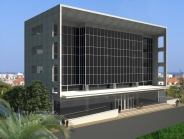Search Property
Tools and Calculators
Links
Why Cyprus?
Did you know that Cyprus …
Has a considerably lower price rate for holiday or second homes from other EE countries? Has one of the lowest costs of living and very low crime rates, one sixth of the European average?
Enjoys high standards of schooling and medical care?
Is among the most developed countries in the world regarding telecommunication and ranks 3rd in the world regarding quality and technology? Enjoys 340 days of sunshine?
As a tourist destination, Cyprus enjoys several competitive advantages over other Mediterranean destinations. The climate is attractive on a year-round basis, the destination is safe with a low crime rate, the standard of living is high, the cost of living is low, the people are warm and friendly and there are no language barriers.
In the real estate market, the buyers are usually British retirees and to a lesser extent British second home buyers account for the bulk of the Cyprus market while there is evidence of increased demand from the Swiss, German and Scandinavian markets. This island republic of spectacular beauty offers sandy beaches, rugged cliffs and cool pine forests. Its 9,000-year-old cultural heritage blends East and West.
General
Cyprus becomes an independent republic on 16th August 1960. It is a member of the United Nations, the Council of Europe, the Commonwealth and the Non-Aligned Movement. According to the above treaty, Britain retains two Sovereign Bases (158.5 sq. km) on the island, at Dekeleia and Akrotiri-Episkopi.
The 1960 Constitution of the Cyprus Republic proves unworkable in many of its provisions and this makes its smooth implementation impossible. In 1963, the President of the Republic proposes some amendments to facilitate the functioning of the state and the Turkish Cypriot community responds with rebellion. The Turkish Cypriot ministers withdraw from the Cabinet and Turkish Cypriot civil servants cease to attend their offices while Turkey threatens to invade Cyprus. Since then, the aim of the Turkish Cypriot leadership, acting on instructions from the Turkish Government, has been the partitioning of Cyprus and its annexation to Turkey.
Using as a pretext the coup of July 1974, instigated against the Cyprus Government by the military Junta, then in power in Athens, Turkey invades Cyprus on July 20 1974, violating all principles governing international relations and the UN Charter. As a result, approximately 37% of the island is occupied, 40% of the Greek Cypriot population violently uprooted and thousands of people, including civilians, killed, ill-treated or disappear without trace.
The continuation of Turkish military occupation and the violation of the fundamental human rights of the people of Cyprus have been condemned by international bodies, but until today Turkey refuses to withdraw from Cyprus and maintains the island’s division by the force of arms.
In 1983, the Turkish-held area declared itself the "Turkish Republic of Northern Cyprus," but it is recognized only by Turkey.
Cyprus, although a small country, has a rich cultural heritage which is evident from the fact that the antiquities of Pafos as well as nine Byzantine Churches from the Troodos region are included in the official World Cultural Heritage list.
Unfortunately, since July 1974 a significant part of our cultural heritage is under Turkish occupation and as a result acquaintance with it is impossible. This heritage has been suffering deliberate and serious destruction, since the Turkish forces systematically aim at changing the demographic and cultural structure of occupied Cyprus.
The latest two-year round of UN-brokered direct talks - between the leaders of the Greek Cypriot and Turkish Cypriot communities to reach an agreement to reunite the divided island - ended when the Greek Cypriots rejected the UN settlement plan in an April 2004 referendum. Although only the internationally recognized Greek Cypriot-controlled Republic of Cyprus joined the EU on 1 May 2004, every Cypriot carrying a Cyprus passport will have the status of a European citizen. EU laws, however, will not apply to north Cyprus.
GEOGRAPHY-ENVIRONMENT
Position
Cyprus, at the crossroads of Europe, Asia and Africa, is situated in the north-eastern corner of the Mediterranean Sea, 75km south of Turkey, 90km west of Syria and 380km east of the Greek island of Rhodes. It is the third largest island in the Mediterranean after Sicily and Sardinia, with an area of 9.251 sq km. Of the total area 35% is occupied by Turkish troops while 3% constitutes the territory of the British Sovereign Base Areas (BSBA).
Topography-geology
Two mountain ranges, the Troodos Range and the Keryneia Range, run from east to west across the island separated by the central Messaoria plain.
The densely forested Troodos Range in the south-west is a dome-shaped highland dominated by the island´s highest peak, Mount Olympus, at 1.953 metres above sea level. The entire Troodos massif takes up approximately one half the area of the island and constitutes the largest volume of ophiolite rock in the world. This unique mountain range constists of part of the earth´s upper mantle, thrust upwards from the primordial seabed many millions of years ago. It is of great interest to geologists and allows access to geological strata that would otherwise remain concealed beneath the sea.
The narrower Keryneia Range in the north , mainly of limestone, rises up to 1.024 metres and is also known as the Pentadaktylos- or Five Finger mountain. It is made of a succession of mostly allochthonous sedimentary formations ranging from Permian to Middle Miocene in age. Karpassia, the northeastern part of the range, is a continuation of Pentadaktylos consisting of hills, slopes and valleys free of foldings and other tectonic features.
The central Messaoria plain has a low relief and was formed during a very recent chronological period (holocene).
Cyprus is almost surrounded by coastal valleys where the soil is alluvial and fertile, suitable for agriculture. Arable land in Cyprus constitutes 46,8% of the total area of the island. Rivers are seasonal and only flow after heavy rain.
Population
According to data from the Statistical Service of the Ministry of Finance, the total population of Cyprus was 802.500 at the end of 2002 of whom 80,1% (642.600) are considered to be members of the Christian Greek Cypriot community and speak Greek. Of the remainder, 10,9% (87.400) belong to the Moslem Turkish Cypriot community and speak Turkish, and 9% (72.500) are foreign workers and expatriates residing in Cyprus. English is widely spoken in Cyprus and regularly used in commerce and government.
While the majority of the Greek Cypriot community are members of the Autocephalous Greek Cypriot Orthodox Church of Cyprus, 1% are actually members of the Armenian, Maronite and Latin churches. Under the provisions of the 1960 Constitution these religious minorities chose to be considered members of the Greek Cypriot community.
Since the Turkish invasion and occupation of over a third of the island, the demographic character has been changed dramatically as a result of Turkey´s population policies. There are now around 115.000 illegal Turkish settlers in the occupied area, while an estimated 55.000 Turkish Cypriots have emigrated.
Towns
The capital of Cyprus is Lefkosia (Nicosia) with a population of 208.900. It is situated roughly in the middle of the island and is the seat of the government as well as being the main business center. Lefkosia has the unwelcome distinction of being the only divided capital city in the world. Since the Turkish invasion of 1974 its northern part is under occupation and is separated from the south by a United Nations patrolled buffer zone.
The second biggest town on the island is the main commercial port of Lemesos (Limassol) in the south of the island, also a popular tourist resort, which has a population of 163.900.
The coastal town of Larnaka in the south-east has a population of 73.200 and is the island´s second commercial port and also an important tourist resort. To the south of the town is situated Larnaka´s International Airport.
Pafos in the south-west with a population of 48.300 is a fast developing tourist resort and home to the island´s second International Airport.
In the Turkish occupied area, Ammochostos (Famagusta) in the eastern part of the island was the centre of the pre-1974 tourist industry. Other main towns which are also under Turkish occupation are Morfou in the north-west and Keryneia in the north.
Climate
Cyprus is the warmest island in the Mediterranean. The mean daily temperature in July and August ranges between 29°C on the central plain to 22°C on the Troodos mountains, while the average maximum temperature for these months ranges between 36°C and 27°C respectively. Winters are mild. The island, on average, enjoys more than 300 days of sunshine every year, and the rainy season is confined to the period between November and March. Snow occurs rarely in the lowland and on the northern range of Keryneia but falls every winter on ground above 1.000 metres on the Troodos Range, usually occurring by the first week in December and ending by the middle of April.
Natural Environment
The coast of Cyprus is indented and rocky in the north, with long sandy beaches and numerous coves in the south. The northern coastal plain is covered with olive and carob trees and backed by the steep limestone Pentadaktylos mountain range. In the south the extensive Troodos massif is covered with pine, dwarf oak, cypress and cedar trees. Seventeen per cent of the island is woodland. Between the two ranges lies the fertile Messaoria plain.
The flora of Cyprus is unique and constitutes a truly outstanding botanical heritage. With an estimated 1.800 species of flowering plants, 8% of which are found only on the island, it is a paradise for botanists.
The arrival of animals on the island has long been a subject of fascination for zoologists. Evidence suggests that the first animals were pigmy hippopotami and elephants which swam to Cyprus. Apart from certain species of mice and shrew, they remained the only inhabitants of the island until the arrival of man. The present-day fauna of Cyprus includes 25 species of mammals , 26 species of amphibians and reptiles, 365 species of birds ( though only 115 breed on the island) and a great variety of invertebrates while the coastal waters of the island give shelter to 197 fish species and to various species of crabs, sponges and echinodermata.
The largest wild animal found on the island today is the moufflon (Ovis orientalis ophion), a rare type of mountain goat unique to the island. It is strictly protected and its population has revived from near extinction to about 2.000 animals at present. It is the symbol of the Republic of Cyprus and is used on its coins.
Each year Cyprus is used as a stopping off point by millions of migrating birds traveling between Europe and Africa, something that has been observed since Homeric times. The birds are attracted by the island's two salt lakes at Larnaka and Akrotiri.
Other seasonal visitors to the island include the Green and loggerhead turtles (Chelonia mydas and Caretta caretta) which travel to the island's sandy beaches each year in order to lay their eggs. A successful conservation project was launched in 1978 in order to protect these two species. The programme, which includes a hatchery, is a model one in the Mediterranean.
For more information go to: www.cyprus.gov.cy



